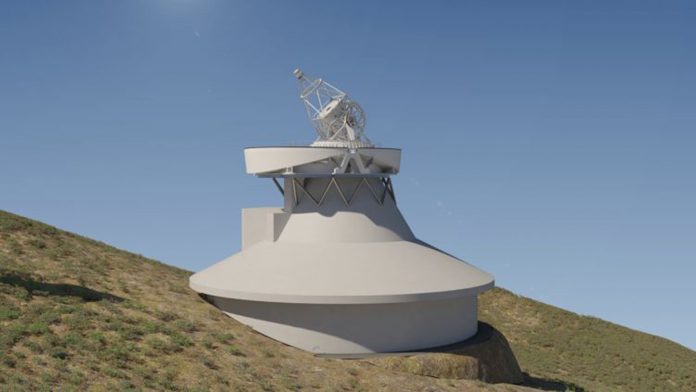Nine European countries, including the UK, are working together to construct the European Solar Telescope.
The European Solar Telescope (EST) will be the biggest solar telescope ever constructed in Europe. It aims to provide unparalleled insights into the phenomena of space weather.
Several UK universities are leading a consortium to develop designs for its construction.
The first light of the new device is expected to go ahead between 2028 and 2029.
Can the project unravel the mystery of space weather?
First launched in 2008, the project for the European Solar Telescope aims to provide valuable insights into underlying solar flares and coronal mass ejections.
These events determine the mystery of space weather, which can lead to geomagnetic storms on Earth and strongly influence our technological society.
Led by the University of Sheffield, the consortium includes the universities of Aberystwyth, Belfast, Durham, Exeter, and Glasgow.
The team are overseeing the construction of the EST at the world-renowned El Roque de los Muchachos Observatory at La Palma in Spain.

Professor Robertus von Fay-Siebenburgen, from the University of Sheffield’s School of Mathematics and Statistics, will be a principal investigator for the UKUC project.
He stated: “The European Solar Telescope will be the biggest ground-based solar telescope constructed in Europe and will keep its European partners at the forefront of solar physics research.
“By studying the physical processes happening in the solar chronosphere in such detail for the first time, we will gain new insight into how the heating mechanisms that underpin the plasma heating processes occur.
“Learning from how nature does it will help us explore how to replicate the process for the benefit of humankind.”
One of the telescope’s primary objectives is to improve understanding of the Sun by observing its magnetic fields in unprecedented detail. Once operational, it will be able to uncover signals currently hidden in the noise and reveal the existence of unknown, tiny magnetic structures.
Additionally, a comprehensive set of instruments will be installed to enable simultaneous observations across multiple wavelengths. This unique capability will give the EST a higher efficiency than existing or future telescopes, whether ground-based or space-borne.
The European Space Telescope is almost ready for construction
The University of Sheffield is developing designs for the capability of the project to process huge amounts of data captured by the telescope.
It’s estimated that the EST will produce a petabyte of data per day, roughly equivalent to the amount of data used to store more than 220,000 films. Sheffield will be responsible for how the project can handle and analyse some of this data, which, at the moment, few scientific projects around the world come close to doing.
The preliminary design phase of the European Solar Telescope, which was funded by the European Commission’s Horizon 2020 programme, has recently been completed.
Moreover, the recent establishment of the EST Foundation marks a crucial milestone in advancing the project towards its construction phase. One of the Foundation’s primary objectives is to create a European Research Infrastructure Consortium (ERIC), which will bring together the national ministries of the partner countries.
Professor Lyndsay Fletcher of the University of Glasgow’s School of Physics and Astronomy, concluded: “Our research into solar flares and prominences stands to benefit enormously since the innovative design of the telescope means that it is optimised for measuring the Sun’s magnetic field, which governs these energetic phenomena.
“Recording the Sun’s structure and dynamics with four times the spatial detail of any existing solar telescope in Europe will lead to a step-change in the understanding of energetic events on our nearest star.”









